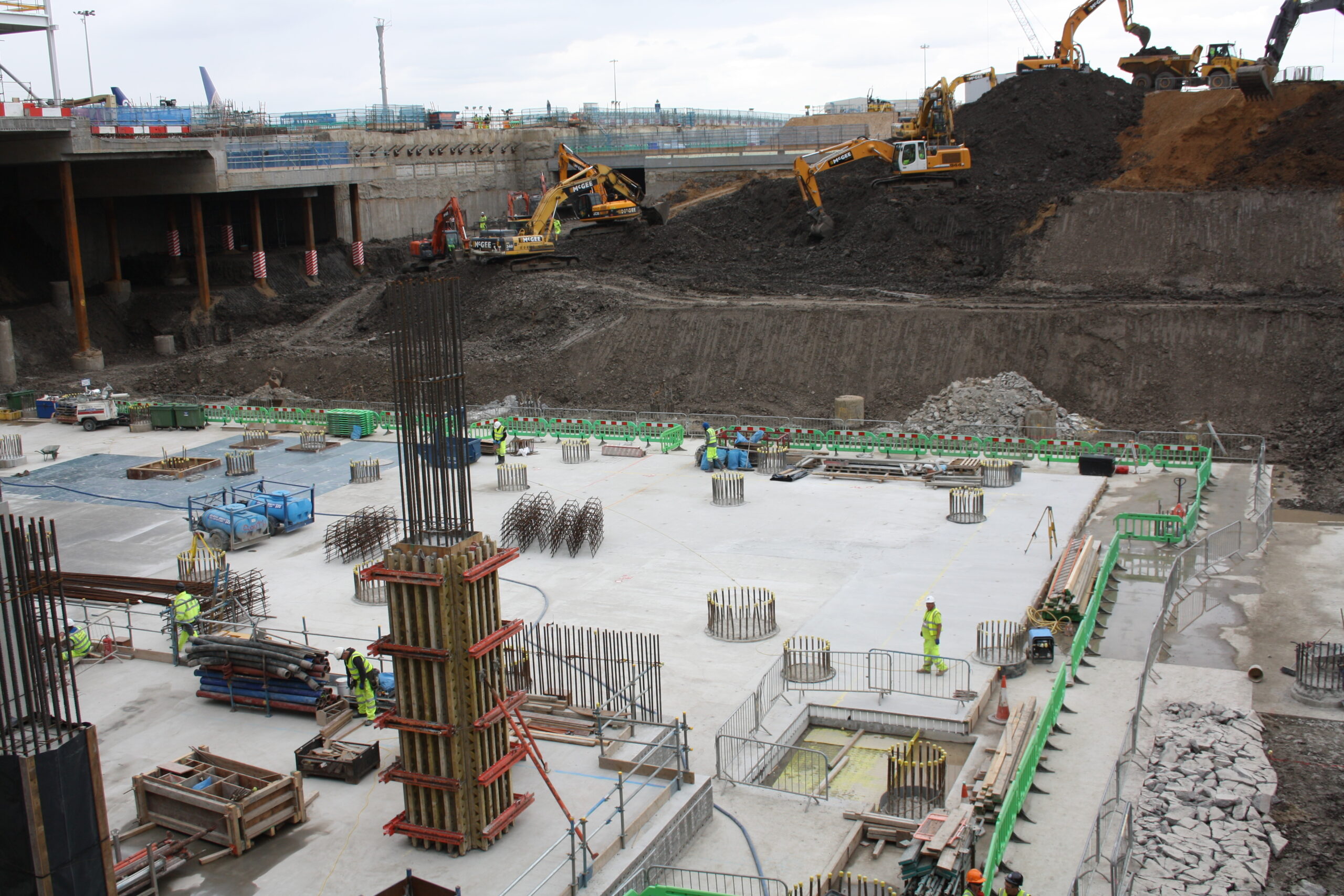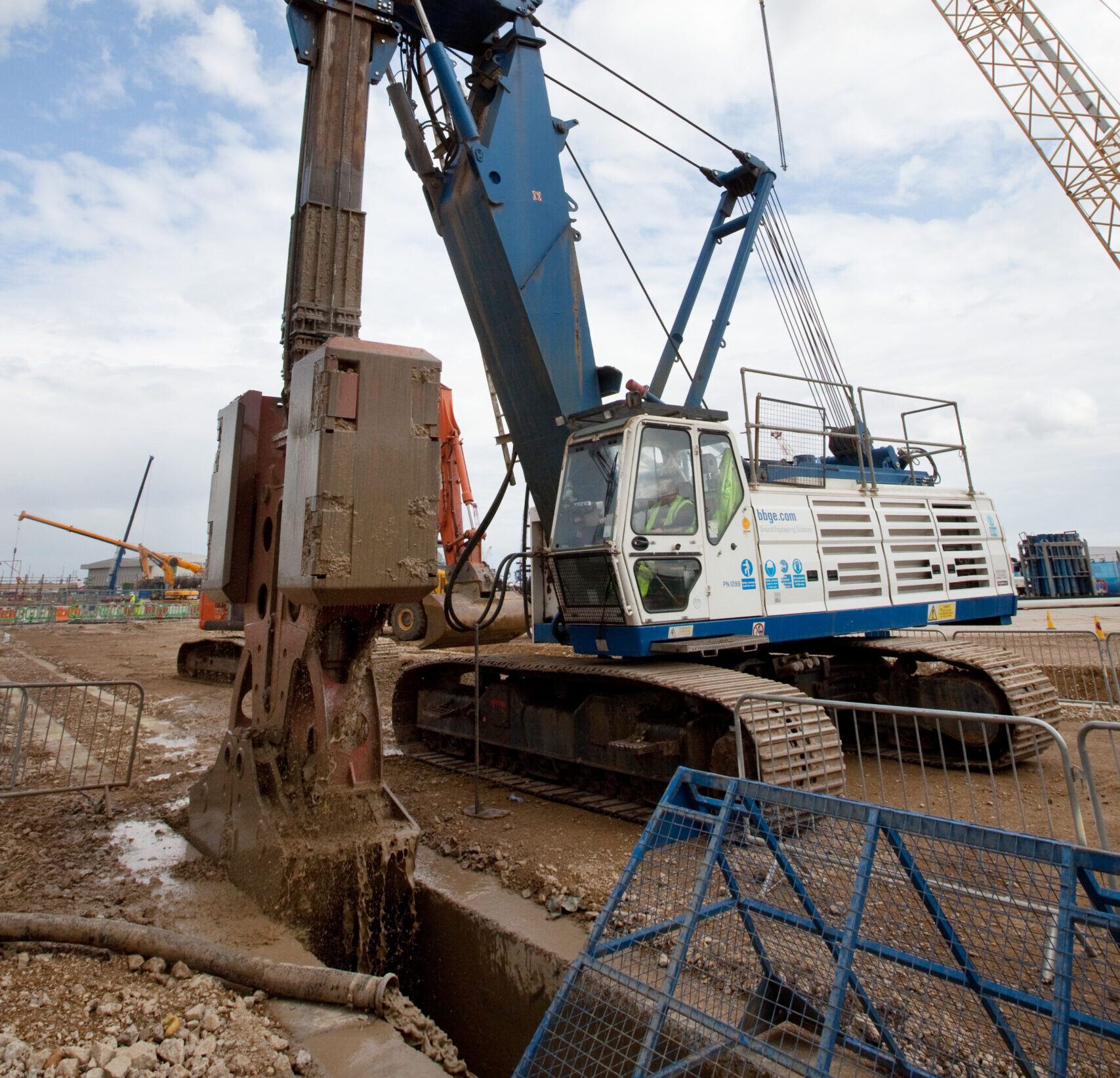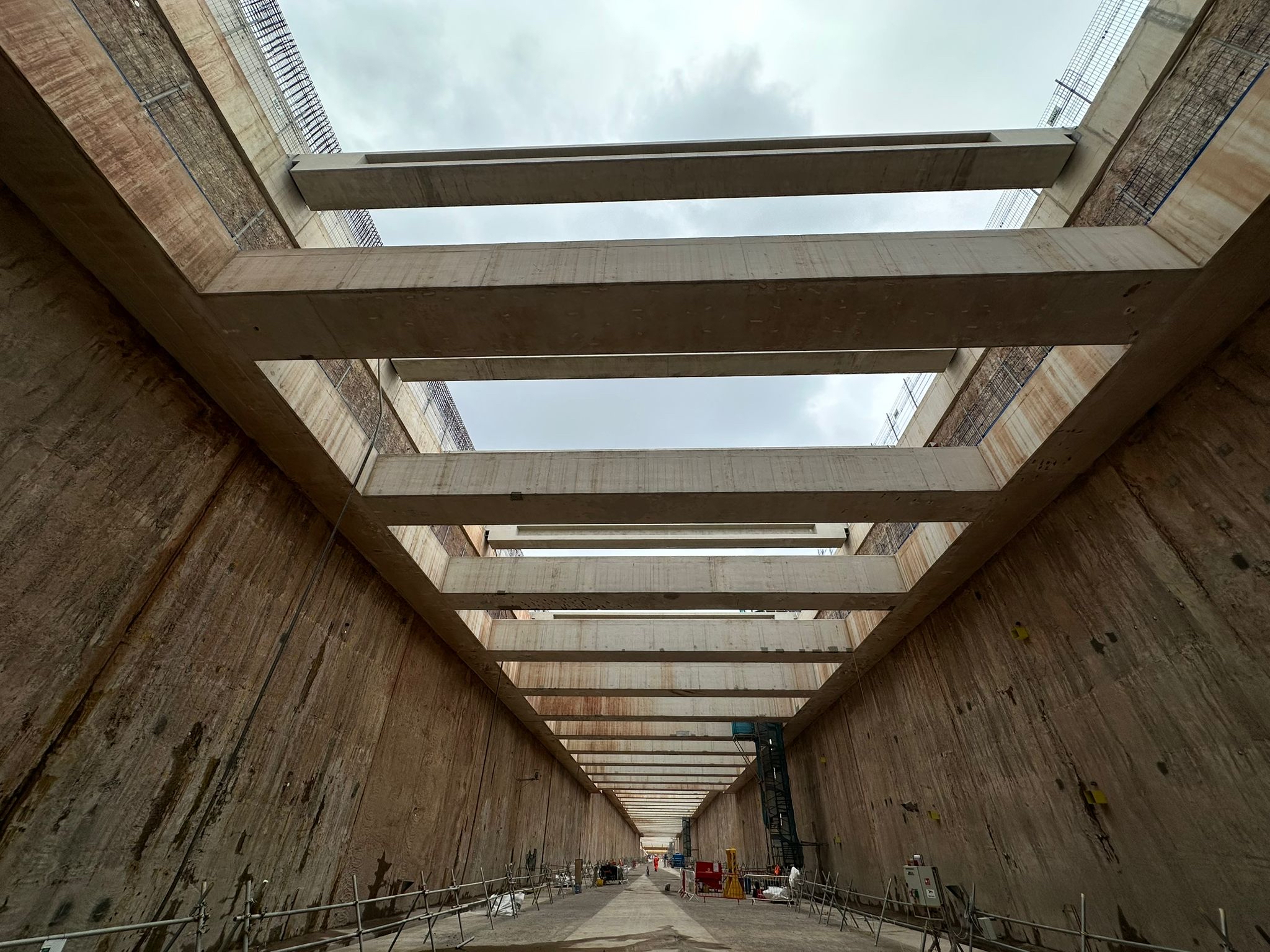We successfully completed the foundations at Terminal 2B at Heathrow Airport supporting the delivery of a redevelopment programme that enhanced the travel experience for over 66 million passengers each year.
On this 10-month project our teams completed the installation of Europe’s longest diaphragm wall – spanning 2km, 705 rotary piles and 163 plunge columns – the highest number delivered on a UK project. We also installed 231 temporary ground anchors with loads up to 900kN and 46m deep, removing the need for internal propping. Rebar cages, that were prefabricated off-site were fitted with anchor ducts to streamline installation.
To maximise programme benefits, we worked 24-hours a day, 7-days a week adopting a combination of top-down and bottom-up construction techniques to enable the superstructure to be built at the same time as excavation of the basement. Using three hydraulic kelly bar grabs we excavated the panels for the diaphragm wall which delivered better precision and faster production than using more common cable operated rigs. Guide beams defining the front and back edges of the D-wall were constructed to ensure exceptional accuracy.
To eliminate fall risks during diaphragm wall excavation, we developed an innovative protective cover system which is now used as standard across all of our diaphragm wall projects. Hatches in the covers allowed operatives to place concrete while protecting them from falling into the excavated trench. We also utilised a safe splice system to join pile cages. This ensured that cages could be joined together over the pile bore without our operatives having to reach inside the cage. The culture of innovation embedded in the project team, contributed to an overall project time saving of six months and a 5% cost saving.
The projects critical path was based around the construction of the diaphragm wall. We refined our construction programme to ensure that the wall was completed six weeks ahead of schedule. In addition to the time saving, we also delivered a number of sustainability benefits including saving over 11,000m³ of excavation and concrete, through diaphragm wall design efficiencies, as well as responsible disposal of 575,000m³ of excavated material.



